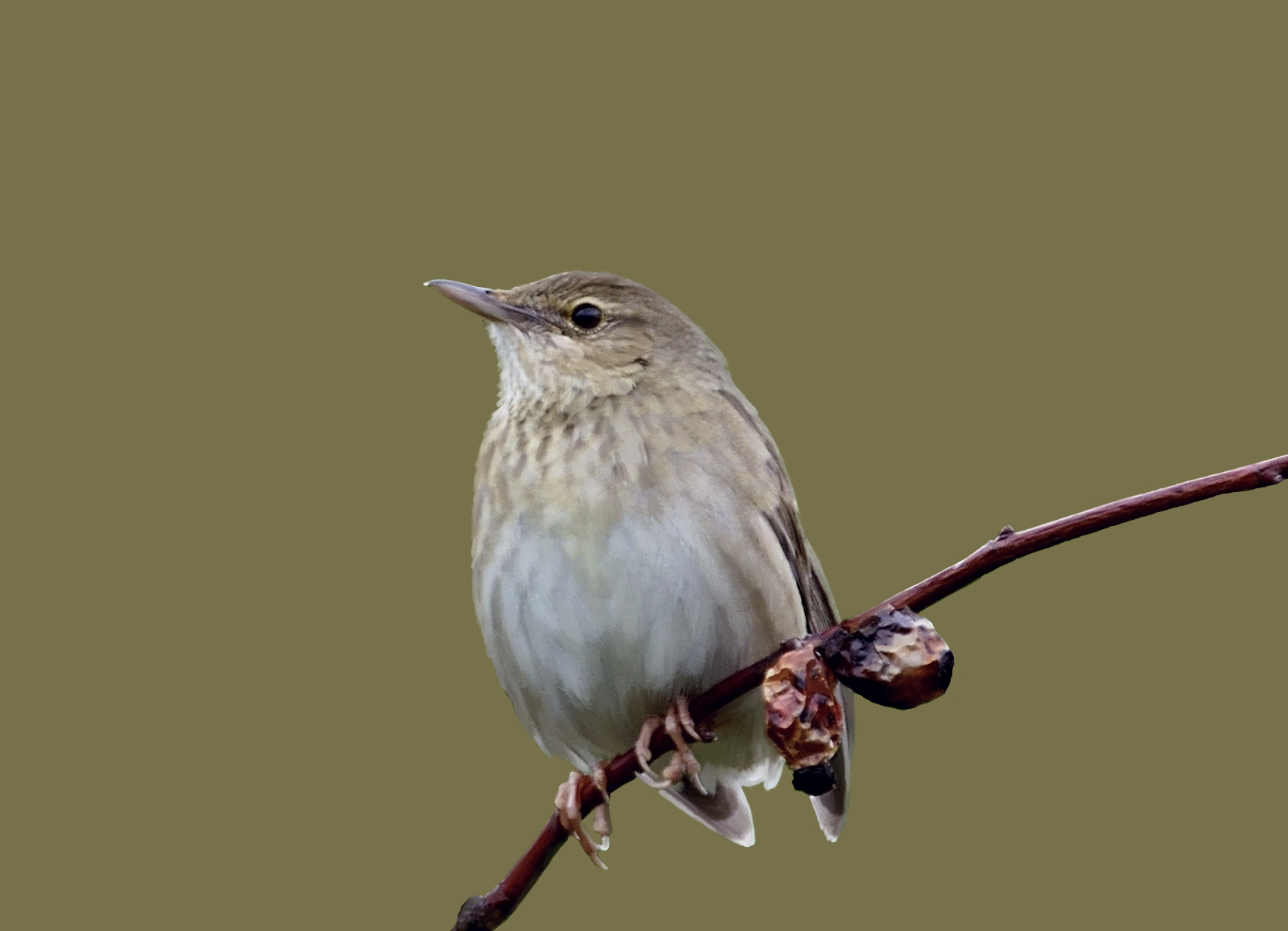River Warbler Locustella fluviatilis

River Warbler (Computer-generated image by Colin R Casey).
A singing male was discovered singing in Elder, Sambucus niger, and Sea Buckthorn, Hippophae rhamnoides, at the north end of Gibraltar Point NNR on May 29th, 1998. Conditions were conducive for an eastern vagrant with sea mist and a strong easterly breeze. The first British record was not until Sep 24th, 1961, typically on Fair Isle. There have been 47 records in all, the most recent being three in 2018 in Shetland (2) and Caithness, thus averaging 1-2 records per year.
| Site | First date | Last date | Count | Notes |
| Gibraltar Point NNR | 29/05/1998 | - | 1 | Singing male. |
Finder’s report: River Warbler at Skegness, May 29th, 1998, first county record.
by Kevin Durose.
Note: this account appeared in the Lincolnshire Bird Report for 1998. This was the only British record of 1998 and the 29th in all. The RC noted that the recent increase in occurrences of singing males in both spring and summer surely corresponds with the spread in Northern Europe and might it be just a matter of time before a breeding attempt is made in Britain? It almost goes without saying that silent females may well go undetected, unless they turn up in a mist-net.
Circumstances
On May 29th, 1998, I visited the Seacroft area of Skegness to look for migrants. Weather conditions were sea mist with a strong easterly breeze. I decided to walk down to Gibraltar Point along the landward side of the dunes. As I approached the Gibraltar Point reserve boundary, I heard a distinctive song ‘tze-tze-tze-tze-tze...’ coming from some Elder and Sea Buckthorn scrub about 15m away. I realised the bird was a River Warbler and as I moved closer to get a view of the bird, I saw it singing from the top of an Elder bush. Although partially hidden by Sea Buckthorn I could see the streaked throat and broadly barred undertail coverts as well as the general structural and plumage features.
After about 10 minutes I moved forward trying to get a closer view but unfortunately the bird immediately darted for cover. After about 5 minutes the bird started to sing again from another position about 10m further back. I attempted to locate it by moving forward, and again the bird stopped singing. I then retreated about 30m to give the bird some space. After about an hour, nothing. So I decided to drive down to the Observatory to find other birders and Birdline Northeast was also alerted at this point. By 8pm about 15 observers had assembled, including Kevin Wilson (KMW) and Andrew Lound. Just as everyone was giving up and the light was fading the bird started singing, unfortunately only for about two minutes. It had still not been seen by anyone else but myself. However, several of the assembled observers including KMW had experience of River Warbler and agreed that the bird was undoubtedly this species based on the distinctive song.
Description
General: typical Locustella shape with fairly short, curved wings, graduated tail and long undertail coverts, seemed more robust than Grasshopper Warbler.
Head: grey-brown and fairly nondescript; the eye was prominent due to the fact that the supercilium was indistinct and barely detectable. Bill colour not really seen but pinkish inside gape.
Upperparts: fairly concolourous olive-grey/brown, slightly paler on rump. The rump was puffed out while the bird was singing, almost enveloping the uppertail.
Underparts: throat dirty white, with belly a similar colour; upper breast streaked brown, the marks gradually becoming bolder and larger further down the breast until eventually becoming distinct spots; flanks olive-grey/brown; undertail coverts very long and broad reaching well down tail, brown with white tips giving about five or six broad bars of equal width.
Wings: a similar colour to the upperparts and held in a fairly low and relaxed position while the bird was singing, allowing a good view of the curved primaries.
Legs: pale pinkish.
Voice: the song was very distinctive and totally different to Savi’s or Grasshopper Warblers. A loud mechanical ‘tze-tze-tze-tze-tze...’ with each syllable distinct, producing a rhythm similar to a sewing machine or steam train. The song was given in long bursts and the bird was easily audible from 100m. At close range, a separate high-pitched ticking could be heard in the song.

